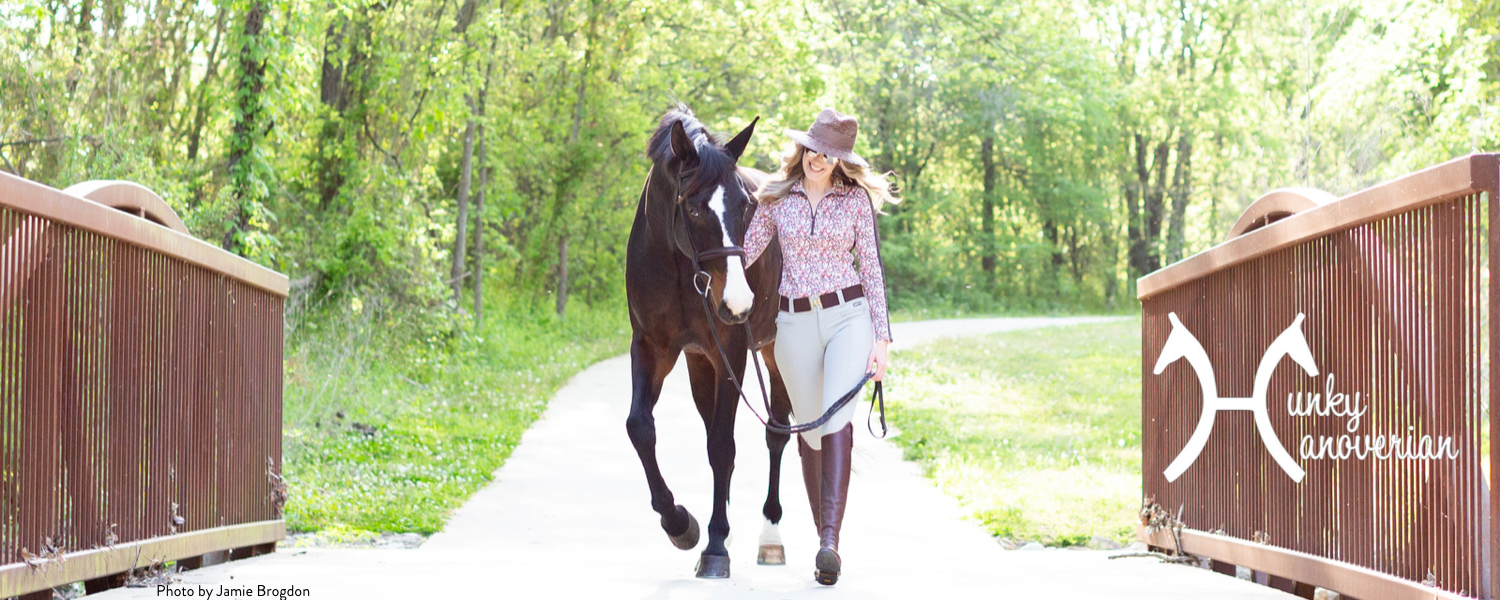Hello!! One of my awesome IG friends (@lyr_equestrian) inspired me for today’s post, thanks girl! I have also gotten this question a lot as one of the Amateur Hour Podcast hosts, so it must be a popular one. For all of those curious about my flatwork routine, I’m about to spill!
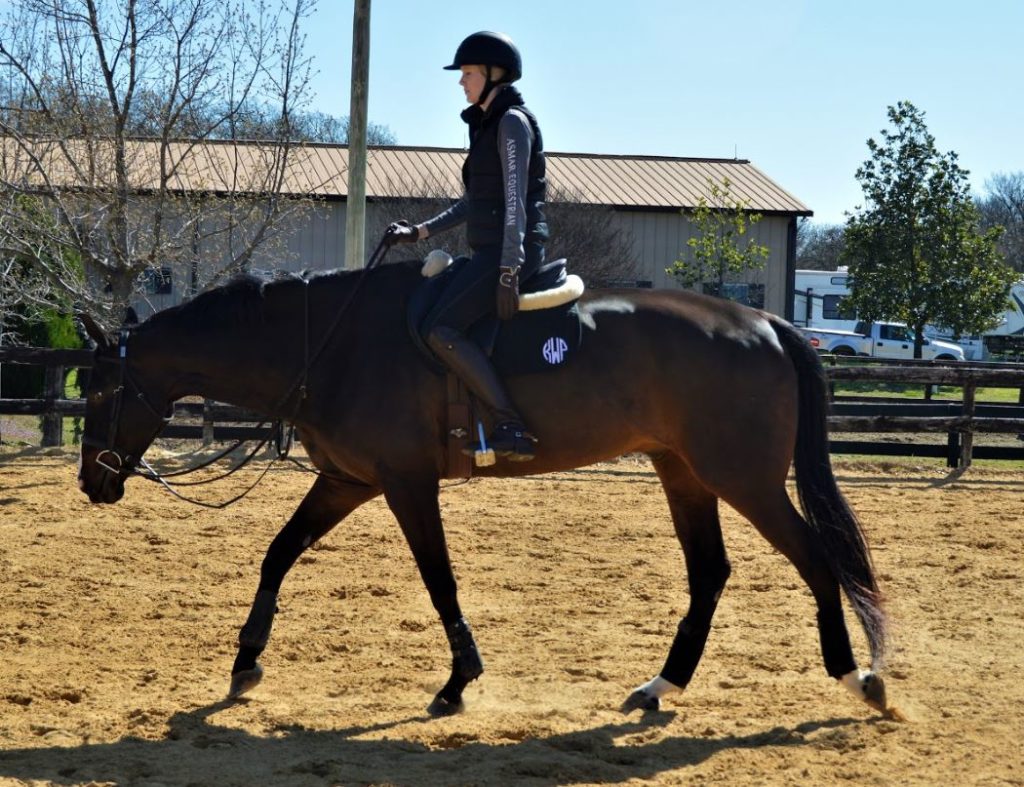
I start be walking on a totally long rein for approximately 10 minutes. I have read that 10-20 minutes of walking helps decrease the chance of tendon injuries. I don’t know if that’s true, but I figure it can’t hurt! Rio has a natural motor at the walk and naturally likes to stretch long and low, so I just relax and let him do his thing. If your horse walks super slow, I would use this time to encourage them to step out more (like a march) and cover more ground. A “swinging walk” is the goal. Rio likes to take this time to walk around like a drunk gangly teenage boy. Walk calmly on the rail? Nahhh. He criss crosses the ring going wherever his whims take him. Some people might frown on this, but I like a casual no pressure warm-up, and we get a lot more structured as we go. He also like to go up and down the grass hill on the south end of the arena which is great for building butt muscles and gazing out on-to his perceived lands.
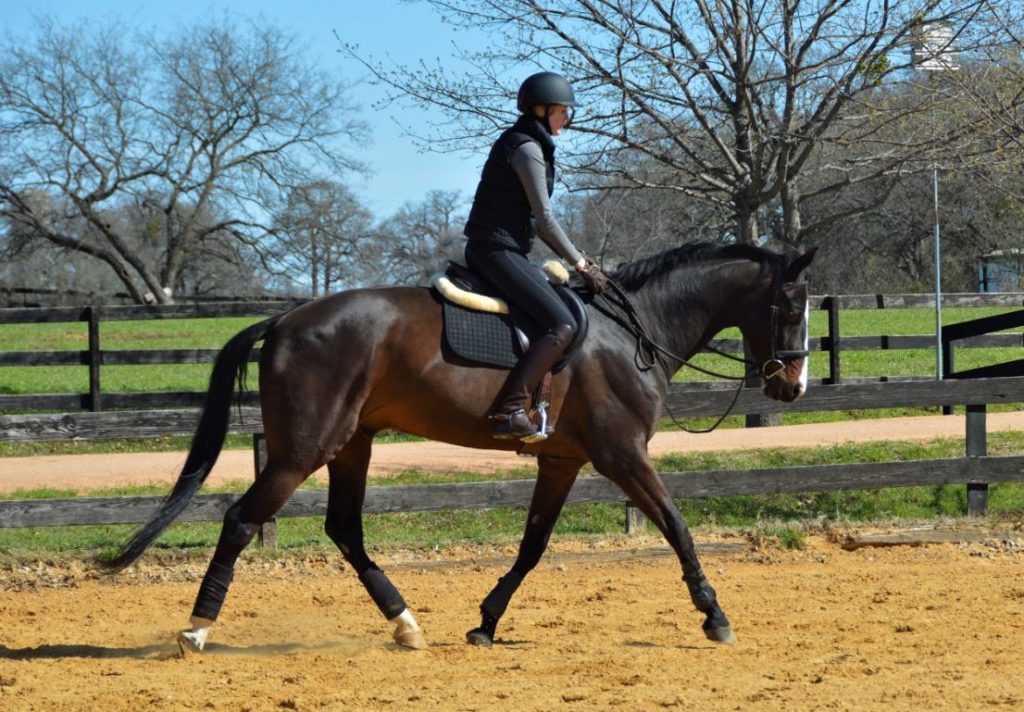
After our long rein walk warm-up, I stay on the rail and pick up the trot and get into a 2 pt, still with little to no rein contact. I like to stay off his back and let him figure out his own pace and balance before interfering. No more aimless wondering now, he needs to stay straight and on the rail at this point. After a lap or two each direction, I transition to posting and start to take a light feel of his mouth. Within the trot I go from a working trot to a lengthen trot and back to a working several times.
I focus on maintaining an uphill balance as we lengthen the stride by really opening up my hip angle, and allowing Rio to stretch out his neck and poke his nose out by having a soft following arm. I slow my posting rhythm to bring him back to a working trot, and if he is fresh and that aid alone doesn’t work, then a take a light feel of his mouth bring sure to relax the moment he responds. After getting his engine going with the lengthen trot transitions we work on collected trot, which I can achieve but transitioning to the sitting trot, and back to working by returning to posting.

Through the transitions within the trot I am also focusing on square corners with good bend, and then really straight long sides. Coming out of the turn I may need to do a few steps of counter bend in the beginning to really reassure myself we are straight and not still slowly drifting out the outside shoulder after the turn. Once we are really straight we might play with going from inside bend to straight to outside bend, making sure the changes of bend are methodical without rushing. If at any point Rio seems non-responsive or tense I try to asses where the breakdown in communication is and make sure I am being super clear with my aids.
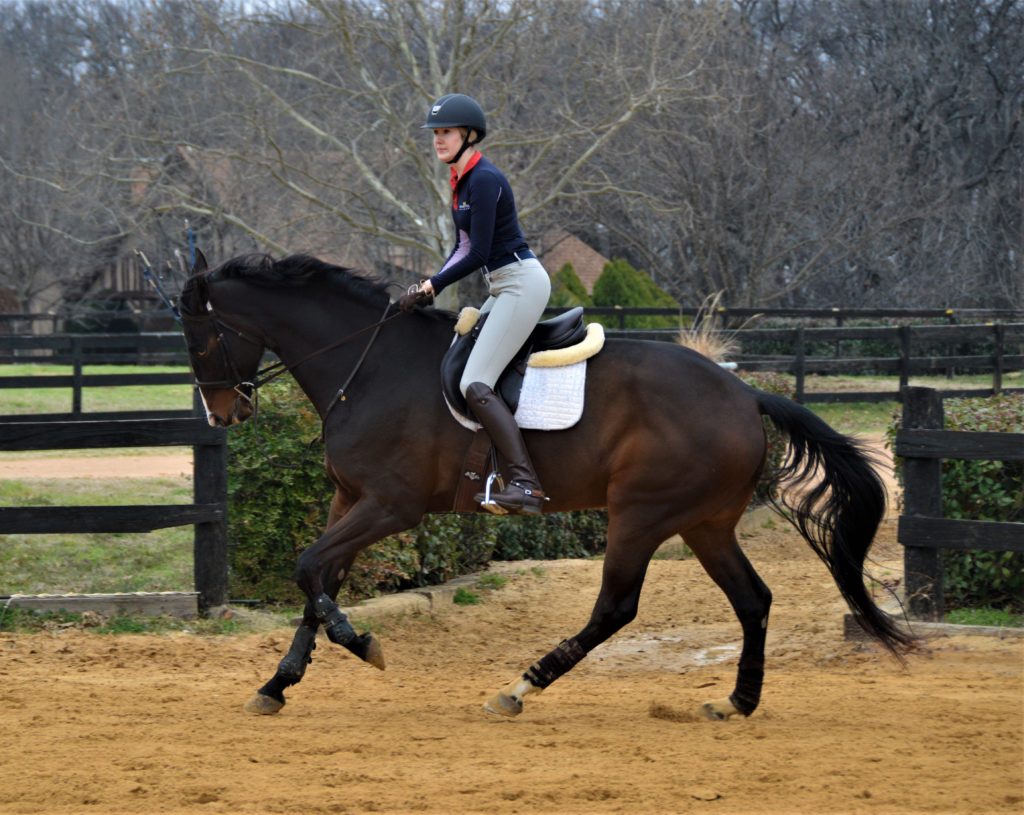
Once we have a good quality trot we step into the canter. After a lap or two on the rail we incorporate a few 20 meter-ish circle. In total honesty, the canter is hard for us and what we have to do to get the best out of him changes every ride. Our goal is always to achieve a quality, balanced, uphill canter. When Rio is feeling lazy we might have to start in 2 pt and move out a bit to get his motor going before focusing on rocking him back on his hind end more. If he comes out of the start gate like he’s planning to win the Kentucky Derby, then I will start in a full seat incorporating big circles focusing on turning his whole body.
If I have to take a feel/half halt, I do it strong enough to get a response, and then immediately drop him again. As a hunter, it is Rio’s job to maintain the desired tempo/balance without me holding his hand. This part is still hard for me, and my trainers have to constantly remind me to completely let go after using an aid. Same with my seat, I’m not supposed to “hold him” with a heavy seat. It’s hard for me to to stay really relaxed when things don’t feel 100%, but we are trying to teach Rio that he can’t just fall apart the second I stop helping him.
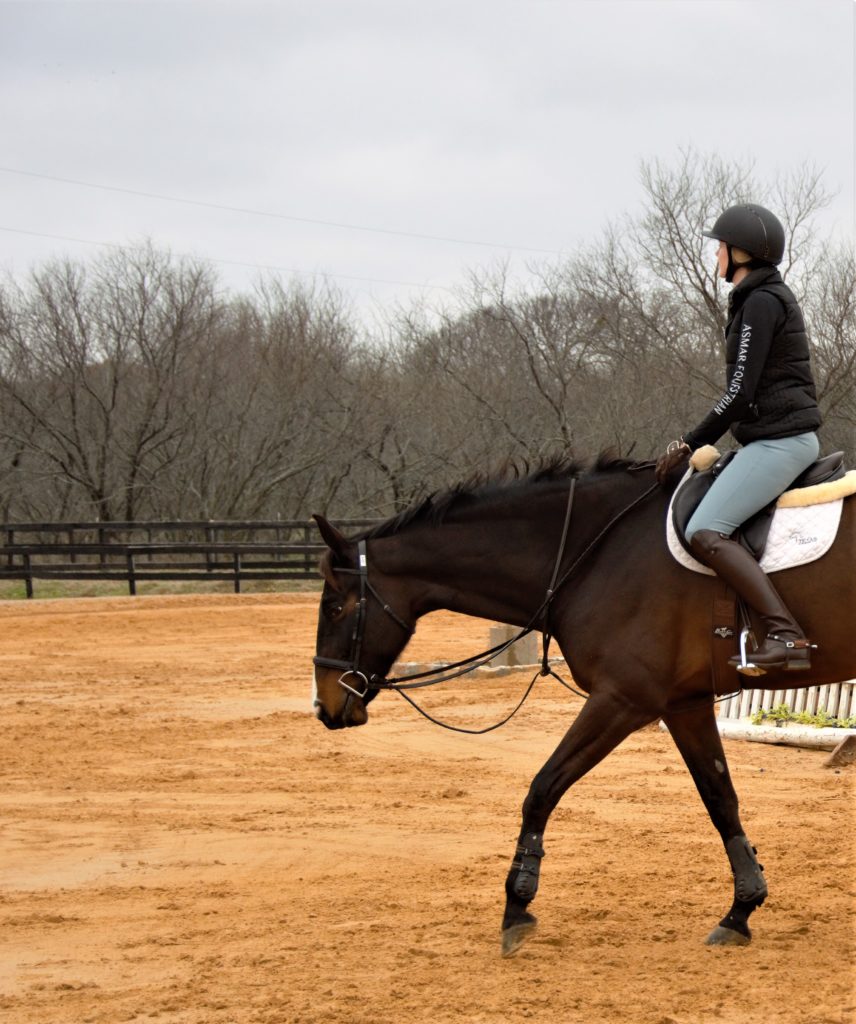
That is our basic warm-up and we go from there depending on how he feels that day. I like to do trot leg-yields to further focus on straightness and engagement. Our ring is full of jumps so leg-yielding around them is a lot of fun. During our walk breaks, I like to throw in some turn on the haunches before stepping into the canter. It really helps to get him sitting on his bum! We will do canter/walk transitions while serpentining through the ring to keep things interesting. We rarely practice flying changes, otherwise Rio starts to get anxious and anticipates them really badly. Every now and then, if he feels totally balanced and calm, I will throw one in, but mostly we do simple changes when flatting.
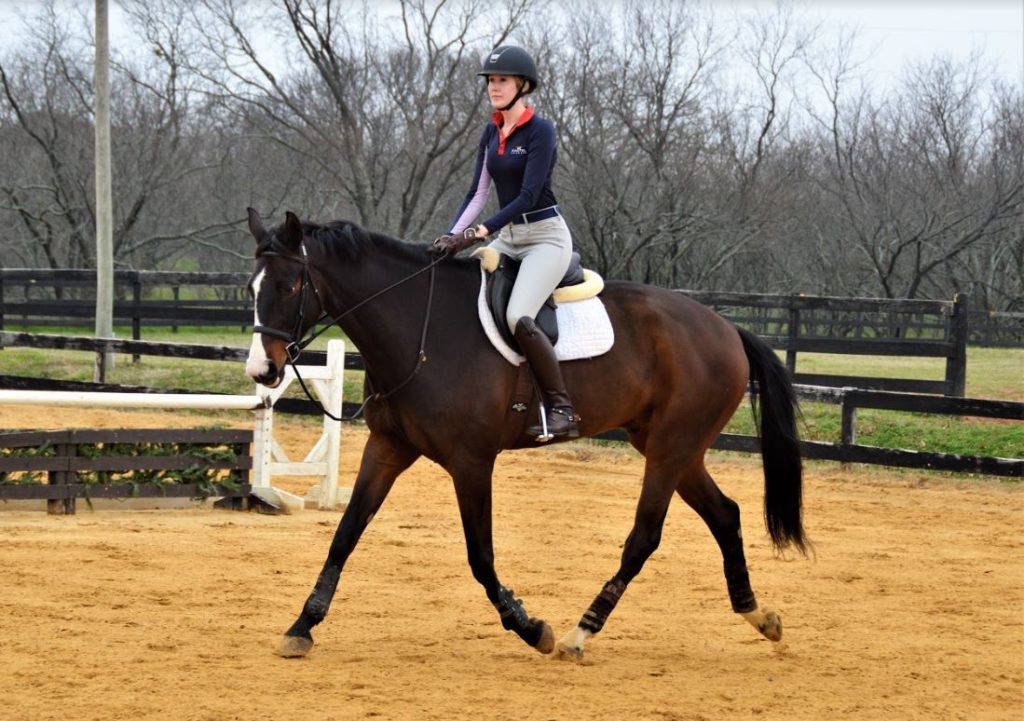
Whenever he feels tense or anxious I pull back the pressure a bit and maybe spend some time stretching. Rio lovesssss to stretch down and out, so I reward him with a lot of stretching between the more collected work. Remember that what we are asking of our horses is HARD, and if you feel frustrated they are probably just as confused and frustrated as you. Take a break and re-group! I have to remind myself to do this too. Rio kept launching over a 6 inch caveletti yesterday at the canter so we had to take a break and calmly walk over it a few times, then move to the trot, then back to the canter before he did it calmly. Break things down, and don’t forget to take baby steps.
____________________________________
Thank you Liana for all the beautiful photos!
